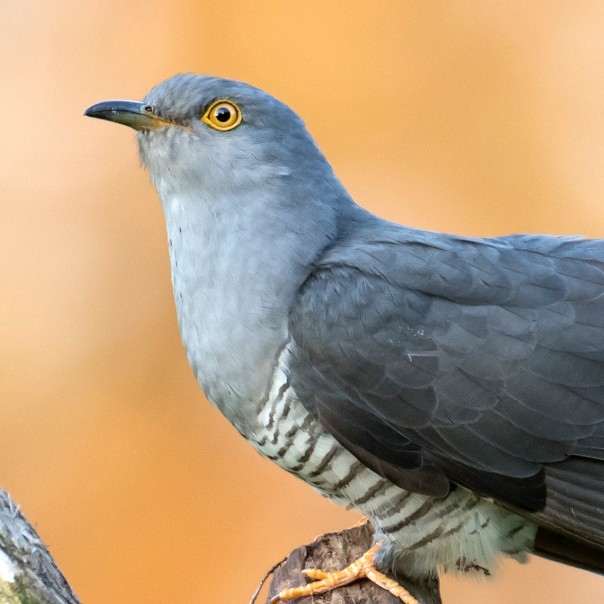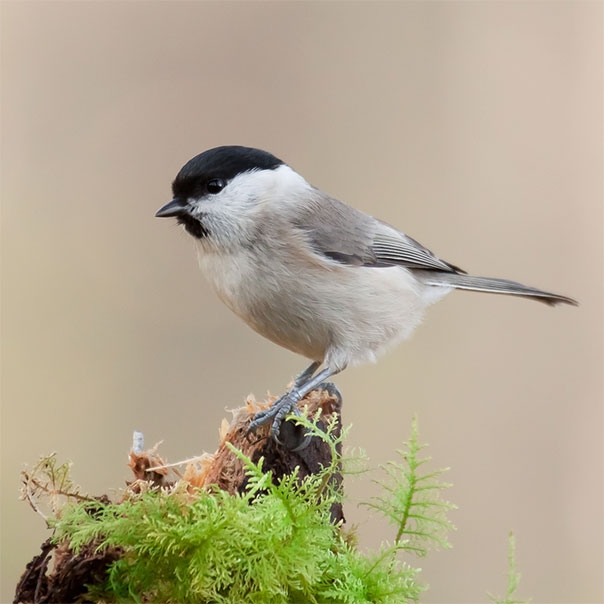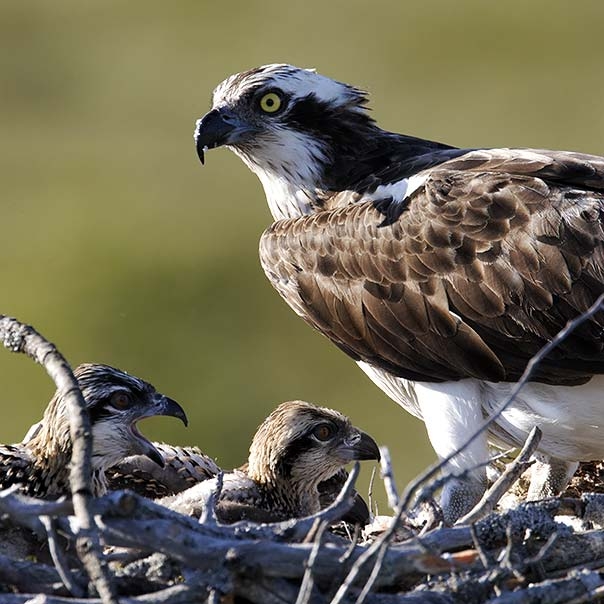Perching birds found in UK wetlands
Wetland habitats provide a home for an array of birdlife.
Here we focus on the small, perching birds, most of which are ‘passerines’. That means they have four toes; three that face forward and one that faces backwards. Passerines around the world make up more than half of all bird species – and you can see a fair few of them in UK wetlands.
What makes a perching bird?
The majority of these birds are passerines (but we’ve included a few other important wetland species too, namely kingfisher, cuckoo and sand martin); this is the most highly evolved group of birds on the planet. Consider the kingfisher, diving to catch fish and nesting in a mud bank. The dipper, swimming underwater in search for food. The cuckoo, laying camouflaged eggs in the nests of other birds. The sand martin, flying to us from Africa every year to catch and eat insects on the wing. A huge variety of song, behaviour and colours make this one of the most interesting groups of birds.
Some are found year round, whilst others are either summer or winter visitors to the UK.
Resident species
Kingfisher
Alcedo atthis
Unmistakable with their bright blue and orange plumage; the female has the orange lower bill. Kingfishers can be seen in a variety of wetland habitats – wherever there is fish to catch! In winter, they may move to where water won’t freeze, such as coasts. If you’re lucky, they will perch up and allow a good view, but it’s more likely you’ll get a flyby as they flash past – listen for their short, sharp whistle. Nests in a hole in a mud bank.
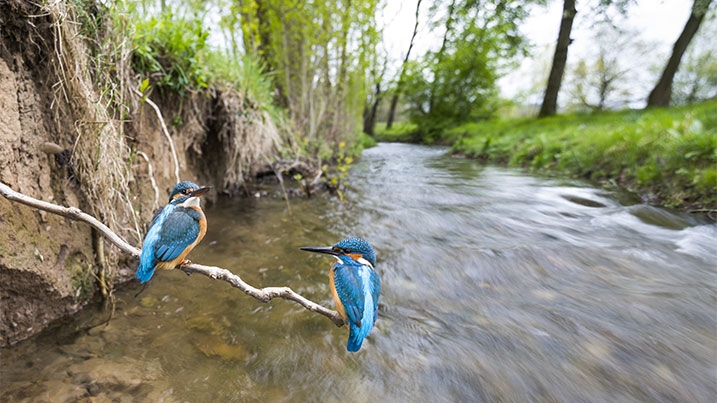
Grey wagtail
Motacilla cinerea
A wagtail with deep yellow lower parts, grey uppers, a distinct black bib and very long tail which is almost constantly pumping up and down. They can be found on lakesides but more usually on rivers and streams, even in urban environments, with a high flow rate where they jump from stone to stone.
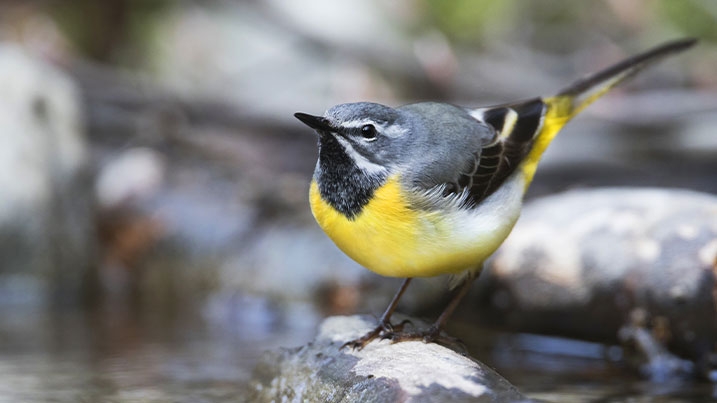
Dipper
Cinclus cinclus gularis
Our only truly aquatic songbird, dippers can swim underwater and even walk along the bottom of streams, weighed down by their uniquely solid bones, on the hunt for aquatic invertebrates. They can be seen in similar habitat to the grey wagtail; clean and healthy shallow rocky streams. They’re easily identifiable with brown plumage and white bib.
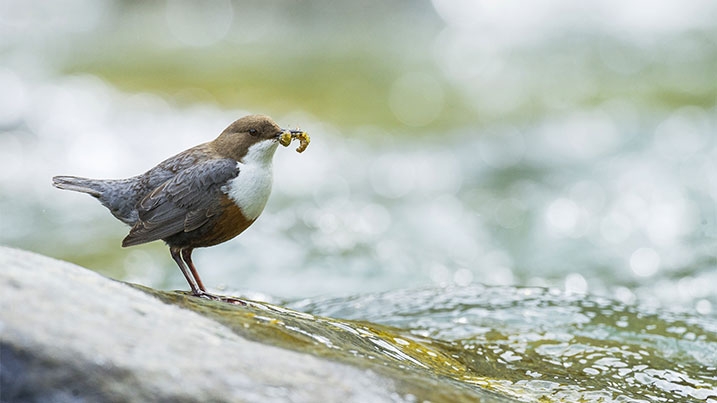
Bearded reedling
Panurus biarmicus
A lover of extensive reedbeds, ‘beardies’ feed on insects in the summer and seeds in the winter. Low in the reeds they build a nest of reed stems. The male has an unmistakable blue head with white bib and black moustache stripes, whilst the females are a smooth buff-colour. Listen out for their pinging calls within the reedbed.
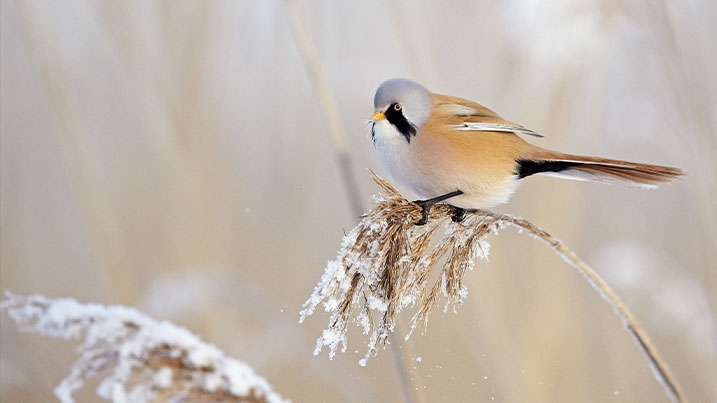
Reed bunting
Emberiza schoeniclus
Present all year-round in UK wetlands, numbers are increased by northern European migrants in the winter months. In the breeding season, males can be seen singing from an obvious perch but otherwise the species can be tricky to get a glimpse of. Watch for their striped appearance and black head in the males.
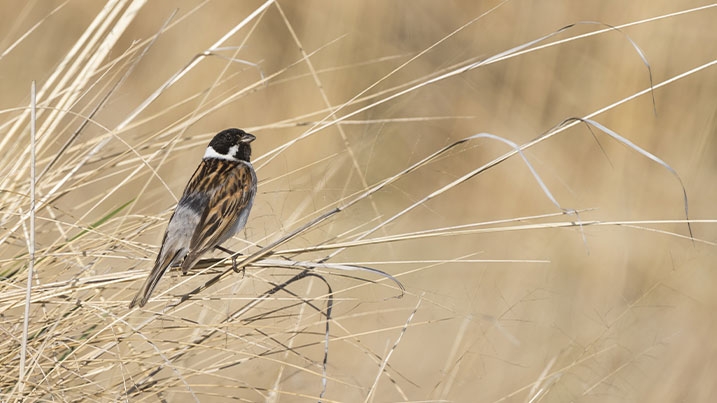
Willow tit
Poecile montanus kleinschmidti
Nesting in the wood of a decaying tree trunk, this species has suffered a severe decline in the UK due to our often-over-tidy landscapes resulting in huge habitat loss. They are best told from the similar marsh tit by their voice, but also look for their matt-black head and large white cheek patch. You can still see these birds in the wetlands of WWT Llanelli and WWT Washington.
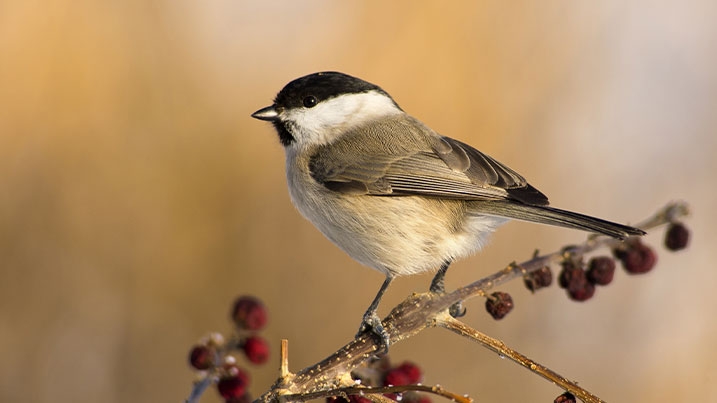
Cetti’s warbler
Cettia cetti
Almost always heard rather than seen, this species keeps to dense vegetation most of the time but you can often hear their explosive song, which can sound like a few short, questioning notes followed by an extended outburst. They occasionally show themselves down by the water’s edge, where you might glimpse a dark eye-stripe, pale supercilium (the colour above the eye) and grey face and breast. They’re taking advantage of our warming climate and spreading slowly northwards, but are still a rarity in southern Scotland.
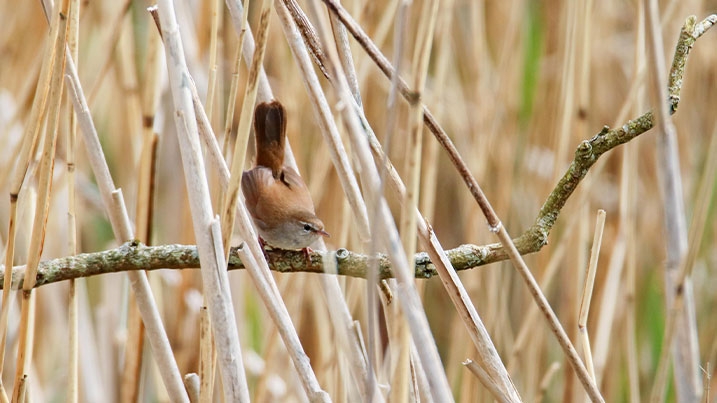
Summer visitors
All of the below birds winter south of the Sahara and so take part in an impressive feat of migration.
Sand martin
Riparia riparia
A small bird that spends most of its life in the air, where it can be seen often flying over water catching insects. They arrive at wetlands in March, before moving to breeding sites, where they nest in colonies in sand or gravel banks. They also use reedbeds as roosts on migration. They are light brown above and white below, with a noticeable brown band across the breast. Whilst the closely related barn swallow and house martin will use wetlands to feed and breed nearby, they aren’t exclusively tied to wetlands as sand martins are.
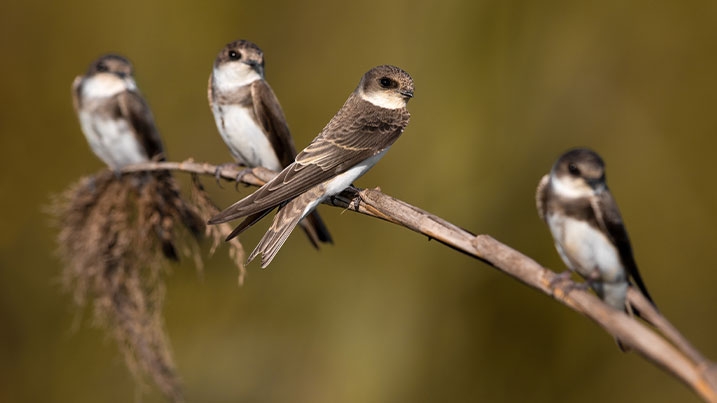
Yellow wagtail
Motacilla flava flavissima
Arriving in the UK in April, yellow wagtails nest on the ground amongst grassy tussocks in wet grassland and marsh, but also in arable crops. On migration they roost in reedbeds, often in large numbers. Keep an eye out for these bright yellow birds especially in spring but also on autumn migration when they might be seen around the feet of cattle, picking at flies.
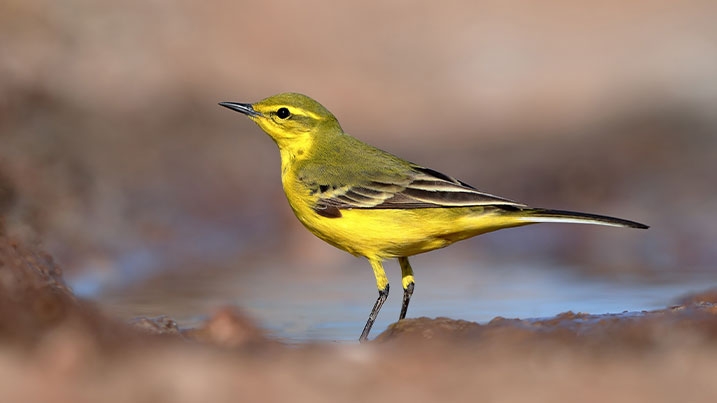
Cuckoo
Cuculus canorus
The cuckoo can be tough to see but listen out for their far-carrying song from when they arrive in April. In flight, they can be mistaken for a falcon thanks to their long, pointed wings. The adults are a plain grey with black and white barred belly, whilst the juvenile birds, seen later in the summer, are strongly barred with some brown to the plumage. Infamously, the female cuckoo lays her egg in the nests of other smaller birds who raise her chick as their own.
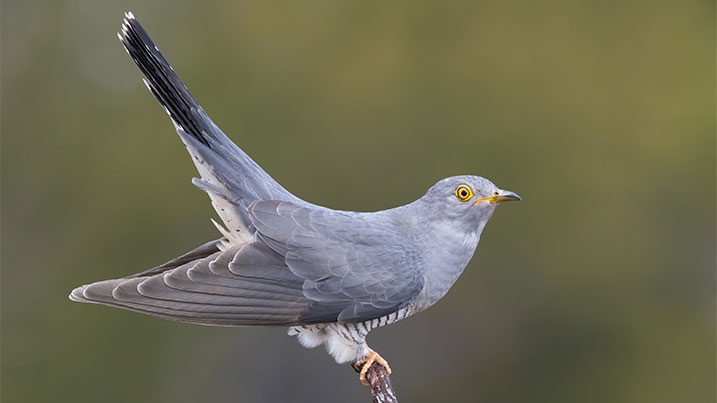
Reed warbler
Acrocephalus scirpaceus
The key species for cuckoo parasitization in wetlands, these warblers can look rather plain but note their strong red-brown colour tone. They can be easily seen when singing from April onwards, which can sound almost ‘chatty’ and with a slow pace; never quite as excitable as sedge warbler (see below).
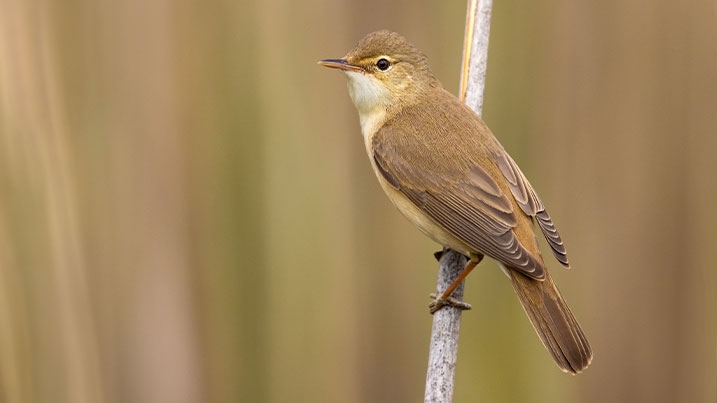
Sedge warbler
Acrocephalus schoenobaenus
Arriving from Africa in early April, they breed in reeds and bushy wetland areas, from where they will loudly sing, with unvaried notes being interspersed with whistles and trills. If you get a good view, you’ll note their light-brown plumage and a distinct supercilium (the colour above the eye) and black stripe through the eye.
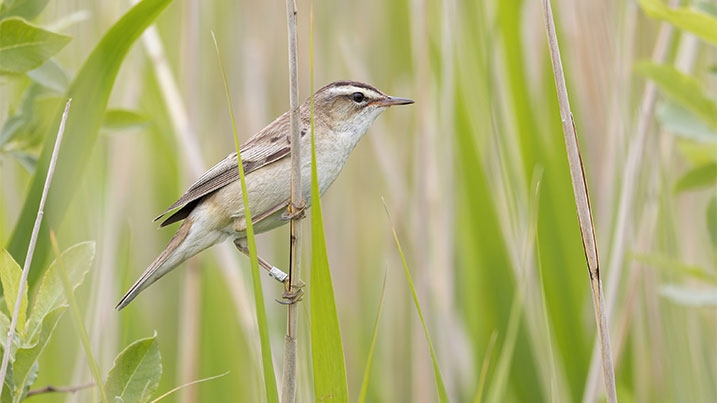
A look to the future?
Our changing climate means that we are seeing more species that regularly breed on the continent visit UK wetlands to do the same, with ranges expanding northwards. The following species occur annually in the UK in small numbers, but could they soon become a firmer fixture?
Bluethroat
Luscinia svecica
A beautiful, robin-like bird with the males sporting a bright blue throat, hence the name. These birds are seen annually in the UK with several breeding records; however they are yet to become established. They like to breed in wet woodland and are a relatively common breeder along the north coast of Europe, in theory not far from south-east England. Might warmer summers caused by climate change tempt more of them across?
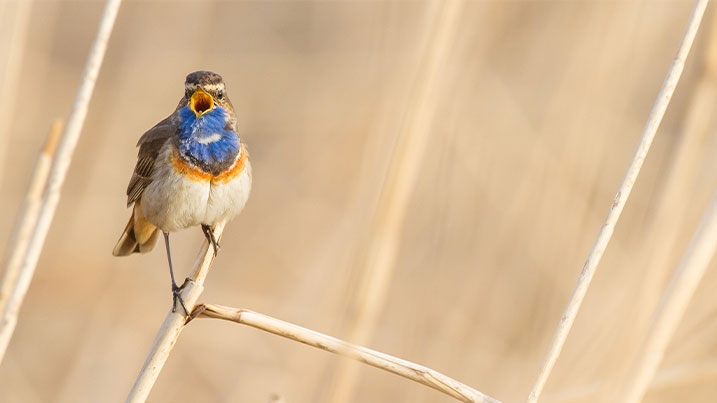
Savi’s warbler
Locustella luscinioides
This species will only be found in extensive reedbeds, where less than ten pairs a year breed in southern England. As our wetlands are restored, are we likely to see more of this species? It can most easily be identified by its song (very similar to the much commoner grasshopper warbler), a seemingly endless ‘reeling’, that might sound very like a cricket or other insect song.
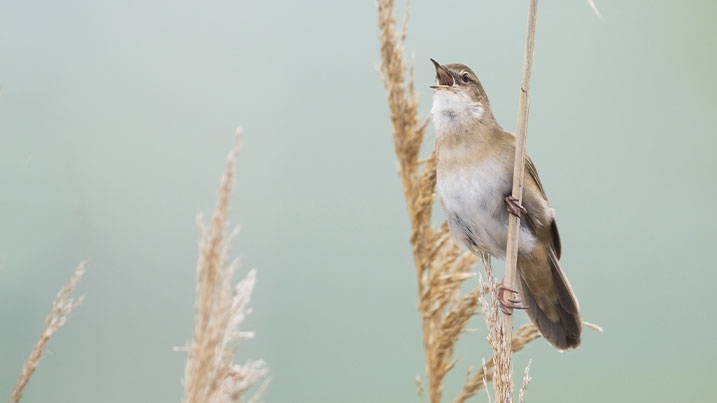
Penduline tit
Remiz pendulinus
A species that seems to be appearing more and more in the UK, having expanded their range NW in recent decades. Could they soon breed here? They build a nest in the hanging branches of trees on the edge of water, made of downy bulrush seeds.
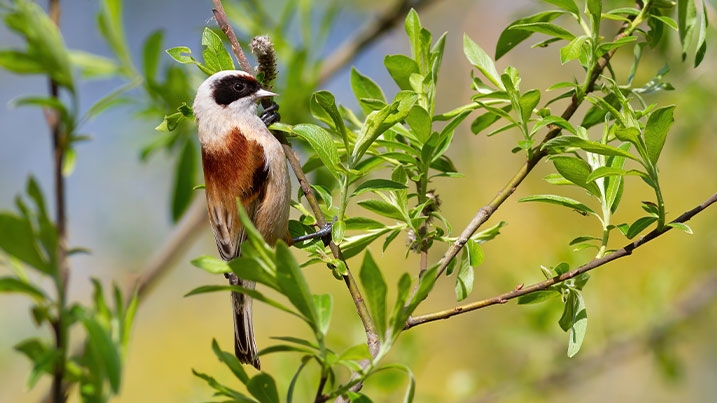
Threats to these species and how WWT are helping
In the UK, the main threats to the wetland birds are climate change and loss of suitable habitat. Climate change means that extreme weather events such as storms, flooding or drought can affect bird’s chances of success on migration or when breeding.
Previous loss of wetland habitat has of course meant that these pressures are compounded. WWT are focusing on creating networks of bigger, better connected healthy wetlands to bring habitat back to the landscape so that these species can flourish and are cushioned from the effects of climate change. Our wetlands sites are a great place to try and spot these species.
Find your nearest WWT site